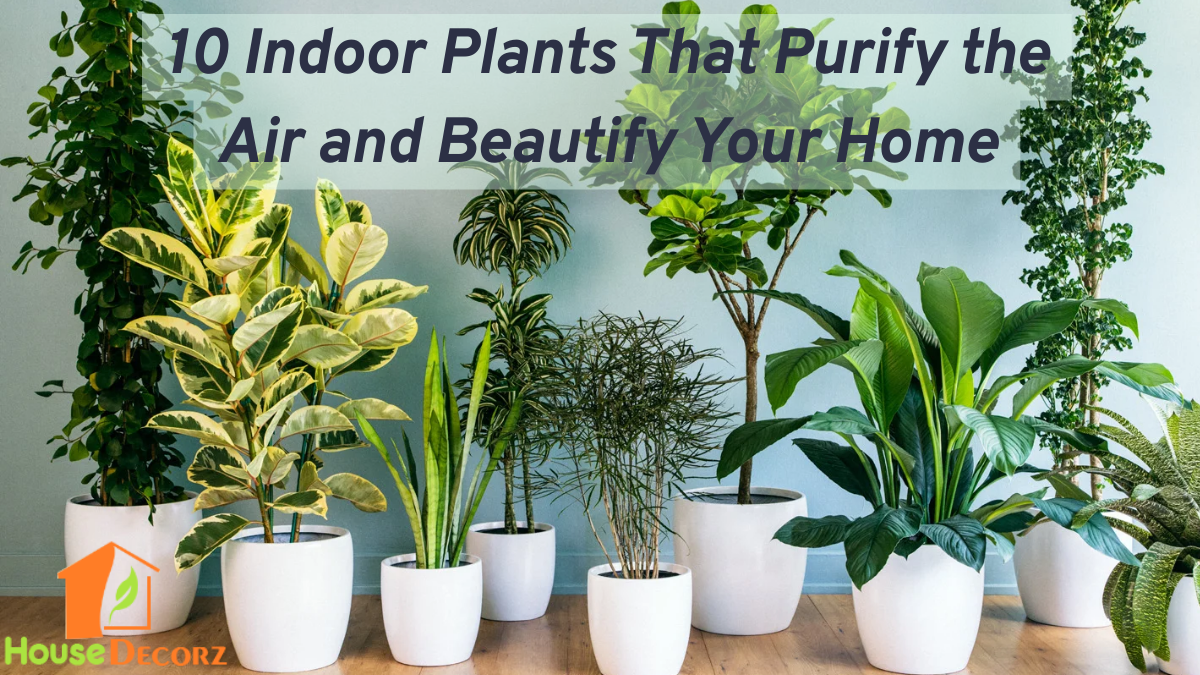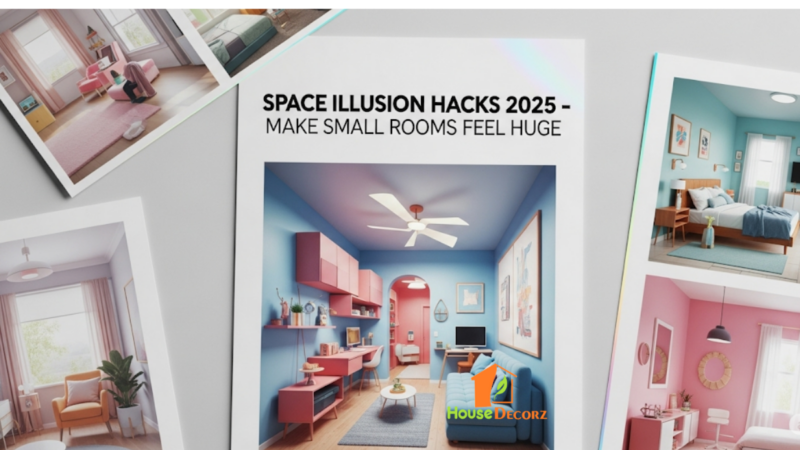10 Indoor Plants That Purify the Air and Beautify Your Home

Indoor plants do more than just add a splash of green—they actively improve your home’s air quality. In 2025, as more people seek natural solutions for healthier living spaces, indoor plants for air purification are gaining popularity. These green companions don’t just clean the air; they also elevate the mood, reduce stress, and bring life to any corner of your home.
Whether you live in a small apartment or a spacious house, the following low maintenance plants are perfect for anyone looking to add style and freshness without the hassle.
10 Best Indoor Plants For Air Purification
1. Spider Plant (Chlorophytum comosum)
The spider plant is a classic choice known for its air-cleansing abilities and adaptability. It removes pollutants like carbon monoxide and formaldehyde and is safe for homes with pets.
Why it works:
- Thrives in indirect sunlight
- Easy to propagate
- One of the top natural air filter plants recommended by NASA
Care tip: Water when the soil feels dry; avoid direct sunlight to prevent leaf burn.
2. Peace Lily (Spathiphyllum)
Peace lilies are both elegant and effective. With their deep green leaves and white blooms, they brighten any space while filtering out benzene, ammonia, and formaldehyde.
Bonus: They also add humidity to the air—great for dry indoor environments.
Care tip: Keep the soil consistently moist and place in low to medium light.
3. Snake Plant (Sansevieria)
Also called “mother-in-law’s tongue,” the snake plant is a powerhouse when it comes to air purification. It’s one of the few plants that converts CO₂ into oxygen at night.
Perfect for: Bedrooms and small living areas.
Care tip: Very low maintenance—thrives on neglect and needs infrequent watering.
4. Aloe Vera
Best known for its soothing gel, aloe vera is also a fantastic air purifier. It absorbs harmful VOCs (volatile organic compounds) found in many cleaning products.
Bonus use: Snap a leaf for natural skin relief after sun exposure.
Care tip: Needs bright sunlight and well-drained soil.
5. Boston Fern (Nephrolepis exaltata)
Boston ferns are lush and feathery, excellent for filtering airborne toxins like xylene and formaldehyde. They also increase indoor humidity, making them ideal for winter.
Design tip: Hang it in baskets or place on high shelves for a cascading effect.
Care tip: Keep soil moist and provide indirect sunlight with occasional misting.
6. Areca Palm (Dypsis lutescens)
The areca palm is a statement plant that doubles as a natural humidifier. Its elegant fronds help remove indoor pollutants and add a tropical feel to your home.
Ideal for: Large living rooms or corners needing height and volume.
Care tip: Requires bright, filtered light and consistent watering.
7. Rubber Plant (Ficus elastica)
Rubber plants are bold, dramatic, and great at removing airborne toxins. They have large, glossy leaves and grow well indoors when given room and light.
Pro tip: A great option if you want a modern, architectural look.
Care tip: Keep soil slightly moist and avoid sudden temperature changes.
8. ZZ Plant (Zamioculcas zamiifolia)
ZZ plants are nearly indestructible and still manage to clean the air. They tolerate low light and long periods without water, making them ideal for beginners.
Best for: Office desks, low-light rooms, or plant newbies.
Care tip: Water sparingly and allow soil to fully dry between watering.
9. Dracaena (Dracaena marginata)
With its sword-like leaves and striking appearance, dracaena adds flair while filtering out benzene, formaldehyde, and trichloroethylene.
Care tip: Prefers indirect light and only needs watering when the topsoil is dry.
10. Pothos (Epipremnum aureum)
Often called the “devil’s ivy,” pothos is one of the easiest plants to grow. It thrives in low light, grows fast, and removes pollutants like xylene and formaldehyde.
Decor tip: Great for hanging baskets or trailing along shelves.
Care tip: Allow soil to dry between waterings; trim vines to encourage bushier growth.
Recommendation
7 Best Indoor Plants for U.S. Apartments That Are Stylish & Low-Maintenance
Living Room Indoor Plants Decoration Ideas
Houseplants That Boost Your Mental Well-being Based on Your Needs
7 Benefits of Keeping Snake Plants In Your Home
35 Types of Snake Plant Varieties to Grow Indoors | Best Sansevierias
Different Types Of Air Plants That You Can Plant Inside Your House
FAQs: Indoor Plants for Air Purification
Q1. Do air-purifying plants really work?
A: Yes. Studies, including NASA’s Clean Air Study, confirm that many houseplants absorb harmful toxins, though they work best when combined with good ventilation.
Q2. Which plant is best for low-light areas?
A: The ZZ plant, snake plant, and pothos thrive in low-light conditions and are perfect for offices or shaded rooms.
Q3. Are these plants safe for pets?
A: Some, like spider plants and areca palms, are pet-friendly. However, plants like peace lilies and rubber plants can be toxic if ingested. Always check before bringing a new plant home.
Q4. How many plants do I need to purify the air in one room?
A: Experts recommend at least one medium-sized plant per 100 square feet of space for noticeable air quality improvements.
Q5. Can I use artificial lights to grow these plants?
A: Yes. LED grow lights or full-spectrum bulbs work well, especially during darker months or in rooms without natural light.
Final Thoughts
Choosing the right indoor plants for air purification not only improves your home’s air quality but also adds warmth and vibrancy to your decor.
These low maintenance plants are ideal for modern lifestyles, requiring minimal effort for maximum benefit. From sleek snake plants to lush ferns, there’s a perfect plant for every space and skill level.






